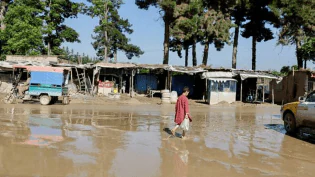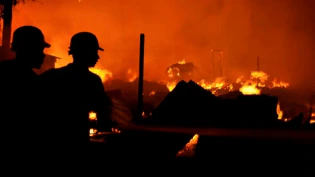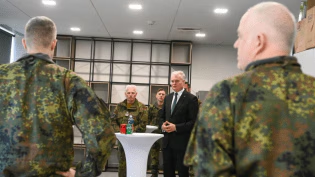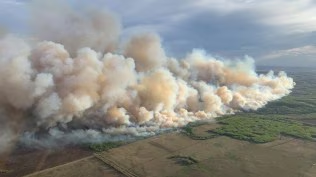One killed, over 100 injured as clashes rock PoK: Here’s all you need to know about the protest
At least one police officer was killed and over 100 people injured in violent clashes between protesters and security forces that rocked Pakistan-occupied Kashmir (PoK) in the last few days. Day-to-day activities and business remained halted pas the clashes turned violent in PoK’s capital Muzaffarabad on Saturday. The police and the activists of a rights movement got embroiled in a scuffle amid a wheel-jam and shutter-down strike across the territory, the Dawn newspaper reported.
During an interview with The Dawn, Kamran Ali, the Senior Superintendent of Police (SSP) in Mirpur said, “A sub-inspector named Adnan Qureshi died from a gunshot wound to the chest in Islamgarh. Qureshi was among the police personnel deployed to prevent a rally organized by the Jammu Kashmir Joint Awami Action Committee (JAAC) for Muzaffarabad via Kotli and Poonch districts.”

Who are protesting in PoK, and why?
The traders in the region are protesting over rising costs of food, fuel and utility bills. The JAAC, an organisation which represents traders of the state, advocating for the provision of electricity at the cost of hydropower generation in the region, subsidised wheat flour, and an end to the privileges enjoyed by the elite class.
What led to the clashes in PoK?
Police arrested around 70 JAAC activists during raids in Muzaffarabad and Mirpur divisions, leading to clashes in Dadyal on Wednesday and Thursday, PTI news agency reported.
Following this, the organisation called for a massive strike in the capital on Friday after police arrested several of its leaders and activists in overnight raids in different parts of Muzaffarabad and Mirpur divisions. The committee had previously announced that people from across the state would stage a long march towards Muzaffarabad on May 11.
During a strike on Friday, violent clashes occurred between protesters and police in various parts of Muzaffarabad, the capital of PoK. To stop the massive protests, police resorted to teargas shelling, which affected people in their homes and mosques after demonstrators pelted stones.
Protests were held in Samahni, Sehansa, Mirpur, Rawalakot, Khuiratta, Tattapani and Hattian Bala.
What’s happening now?
Several videos of the protest since then have gone viral on social media platforms.
#WATCH | Protests against inflation turn violent as police crackdown on demonstrators in Muzaffarabad, PoK.
The Awami Action Committee called for the protest, demanding tax-free electricity from the Mangla Dam and subsidies on wheat flour. The strike was catalyzed by overnight… pic.twitter.com/sigjaDcRtS
— ANI (@ANI) May 11, 2024
On Saturday, authorities in Muzaffarabad placed mounds of earth on roads leading to the state capital and made more to prevent people from reaching the city. According to a press release from the District Headquarters Hospital Kotli, nine injured protesters, along with the 59 wounded policemen, were brought in for treatment. Geo News reported that a total of 29 protestors were injured in the clashes, PTI reported.
What is the administration doing?
Prime Minister of PoK Chaudhry Anwarul Haq said that he was ready to consider the demands of the protesters but urged them not to indulge in violence. Pakistan’s President Asif Ali Zardari on Sunday convened a meeting to discuss how to calm the protests, AP reported.
Meanwhile, the PoK activist Amjad Ayub Mirza called for an intervention by the Indian government. He said in an interview with ANI news agency, “India cannot remain aloof from the current situation in Pakistan-occupied Jammu Kashmir. At the moment, our people are fighting. The whole of Pakistan-occupied Jammu Kashmir has been shut down by peaceful protesters who are being beaten up and shot at by the Pakistan police, Punjab police, the so-called Azad Kashmir Police. India now should focus all its attention on Pakistani-occupied Jammu and Kashmir and help and facilitate the independence of this occupied territory, including Gilgit-Baltistan.”
Last year, Pakistan almost defaulted on its foreign debt payments, the International Monetary Fund and a few friendly nations stepped in to provide loans, saving the country from defaulting. Pakistan’s monthly inflation rate reached over 40 per cent, however, authorities have reported that it has now decreased to 17 per cent in anticipation of negotiations with the IMF for a new bailout package. Pakistan is planning to secure a minimum of $6 billion from the IMF once the deal is reached, which is expected to happen in the coming months.
Disclaimer: The copyright of this article belongs to the original author. Reposting this article is solely for the purpose of information dissemination and does not constitute any investment advice. If there is any infringement, please contact us immediately. We will make corrections or deletions as necessary. Thank you.





